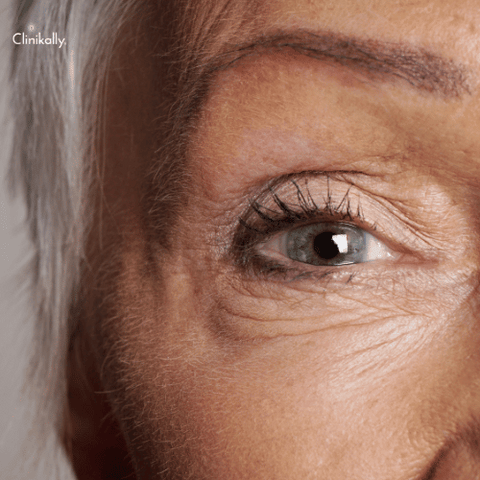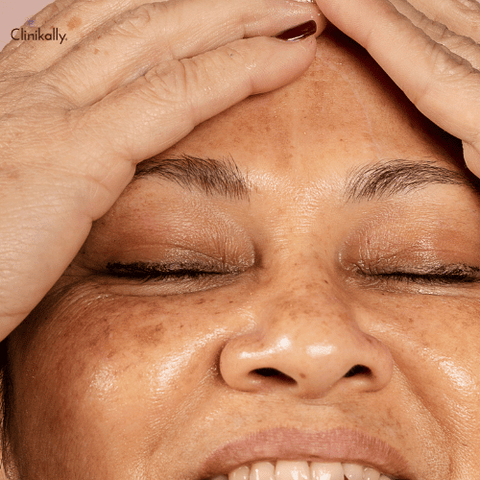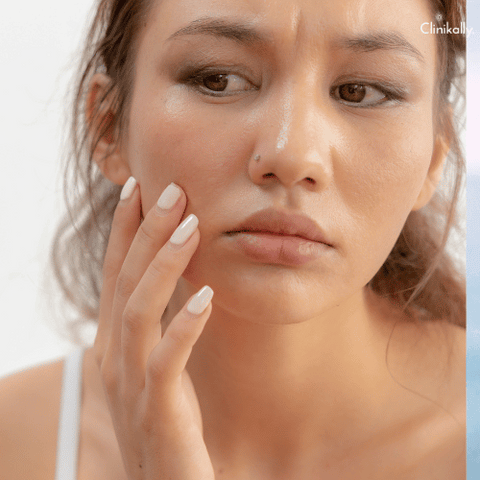Aging gracefully is a goal that many people have, and thanks to advancements in dermatology, there are now more effective ways to manage the aging process than ever before. Two such developments are Botox® and tretinoin. By exploring how these two treatments interact, we can optimize their benefits and address skin aging concerns in an integrated manner. This article provides insights from dermatologists on using Botox® and tretinoin together for effective skincare.
Understanding Botox® and Tretinoin: Benefits and Considerations

Botox®, or botulinum toxin type A, is a popular non-surgical treatment used to soften the appearance of facial wrinkles. It works by blocking nerve signals in the muscles where it's injected, thereby preventing them from contracting and forming wrinkles.
Tretinoin, on the other hand, is a form of vitamin A that promotes skin cell turnover. It's a topical treatment frequently used to combat acne, reduce the appearance of fine lines, and improve skin texture.
Both of these treatments offer specific benefits, but when used together, they can provide a comprehensive approach to managing the visible signs of aging.
How Botox® and Tretinoin Complement Each Other in Anti-Aging Treatment
The underlying mechanisms of Botox® and tretinoin offer a symbiotic relationship for anti-aging treatments. While Botox® relaxes the muscles to prevent the formation of dynamic wrinkles (those caused by muscle movements), tretinoin stimulates the growth of new skin cells and increases collagen production to smooth out static wrinkles (those present without muscle movement) and improve skin texture.
When these two treatments are used in combination, they can address a wider range of aging concerns than when used alone.
Safety Precautions and Professional Guidance for Combined Use
When it comes to combining different products or substances, whether for personal use or professional purposes, it's crucial to prioritize safety and seek professional guidance. The interaction between different substances can have unpredictable effects, and without proper precautions, it can lead to adverse outcomes or even pose significant risks.
- Understanding Potential Risks:
Before embarking on any combined use, it's essential to understand the potential risks involved. Different substances can have varying chemical properties and reactions, which may result in unexpected side effects or even hazardous situations. By researching and identifying potential risks, you can make informed decisions and take appropriate precautions.
- Consultation with Experts:
Seeking professional guidance is paramount when planning to combine different products or substances. Experts, such as doctors, chemists, or specialists in the field, possess the knowledge and experience to evaluate potential risks and provide appropriate advice. They can help you understand the compatibility of substances, suggest alternative options, or offer specific guidelines to ensure safety.
- Research and Education:
Being well-informed is crucial when it comes to combined use. Take the time to research the substances or products you intend to combine. Understand their individual properties, potential interactions, and any existing guidelines or warnings. Staying updated with the latest research, scientific studies, and industry recommendations can help you make safer choices and mitigate risks.
- Adhering to Safety Guidelines:
Following safety guidelines is vital to minimize risks associated with combined use. Different substances may have specific instructions or precautions outlined by manufacturers, regulatory bodies, or industry standards. Ensure you read and understand these guidelines thoroughly, including recommended dosages, storage conditions, and compatibility factors. Adhering to these instructions can significantly reduce the chances of adverse reactions.
- Perform Compatibility Testing:
In certain cases, compatibility testing may be necessary before combining substances or products. This testing involves assessing the chemical compatibility and potential reactions between the elements you wish to combine. Professional laboratories or experts can conduct these tests and provide insights into whether the combination is safe or not. This step is particularly crucial for industrial or scientific applications where precise measurements are required.
- Record and Monitor:
Maintain a record of the substances or products you combine, along with relevant details such as quantities, ratios, and any observed effects. This documentation can be valuable in case of any adverse reactions or when seeking professional advice. Additionally, ongoing monitoring can help you identify any changes or issues that may arise over time, enabling you to take immediate action.
Addressing Wrinkles and Aging Concerns with Botox® and Tretinoin
With the combined use of Botox® and tretinoin, you can effectively address various aging concerns. From reducing dynamic wrinkles, courtesy of Botox®, to improving the overall skin texture and mitigating static wrinkles with tretinoin, this duo can provide a more youthful and revitalized appearance.
Creating an Effective Skincare Routine with Botox® and Tretinoin

In addition to professional treatments, the integration of Botox® and tretinoin into your daily skincare regimen can further enhance the anti-aging effects.
Integrating Botox® and Tretinoin into Your Daily Skincare Regimen
Achieving and maintaining healthy, youthful-looking skin often involves a combination of skincare products and treatments. Two popular options for addressing different aspects of aging and skin concerns are Botox® and tretinoin. While Botox® is an injectable treatment that temporarily reduces the appearance of wrinkles, tretinoin is a topical retinoid that helps improve skin texture and diminish fine lines. In this article, we'll explore how you can integrate Botox® and tretinoin into your daily skincare regimen for optimal results.
- Understand the Purpose of Each Treatment:
Before incorporating Botox® and tretinoin into your skincare routine, it's important to understand their respective purposes. Botox® is primarily used to relax the muscles that cause wrinkles, particularly in areas like the forehead, crow's feet, and frown lines. On the other hand, tretinoin stimulates collagen production, improves skin cell turnover, and reduces the appearance of fine lines, acne, and uneven skin tone.
- Consult with a Dermatologist:
Consulting with a dermatologist is crucial before starting any new skincare regimen, especially when it involves prescription treatments like Botox® and tretinoin. A dermatologist can assess your skin condition, evaluate your specific concerns, and determine if these treatments are suitable for you. They will also provide guidance on the proper application, dosage, and potential side effects of each treatment.
- Establish a Skincare Routine:
Integrating Botox® and tretinoin into your skincare routine requires careful planning. Start by establishing a consistent daily regimen that includes cleansing, toning, moisturizing, and applying sunscreen. Ensure you use gentle, non-irritating products that are compatible with your skin type and address your specific concerns. It's best to follow a skincare routine recommended by your dermatologist, considering the timing and order of each step.
- Introduce Botox® Treatments:
Botox® treatments are typically performed by a qualified medical professional. These injections temporarily relax targeted facial muscles, reducing the appearance of wrinkles and fine lines. If you decide to undergo Botox® treatments, follow your dermatologist's advice regarding the frequency and timing of sessions. They will guide you on when to schedule maintenance appointments to maintain the desired results.
- Incorporate Tretinoin:
Tretinoin is available in various strengths and formulations, including creams, gels, and serums. Your dermatologist will determine the appropriate concentration for your skin and recommend how to incorporate it into your routine. Generally, tretinoin is applied at night after cleansing and drying your face. Start with a small amount, gradually increasing it as your skin adjusts. Remember to use sunscreen during the day, as tretinoin can increase sun sensitivity.
- Follow Proper Application Techniques:
Both Botox® and tretinoin require proper application techniques for optimal results. When using tretinoin, apply a pea-sized amount to your face, avoiding the eye area and lips. Gently massage it into your skin and allow it to absorb before applying moisturizer. When receiving Botox® injections, rely on a trained professional to administer the treatment accurately and safely.
Enhancing the Effects of Botox® with Tretinoin: Tips and Best Practices
Botox® and tretinoin are two popular treatments used to address different aspects of aging and skin concerns. While Botox® temporarily reduces the appearance of wrinkles by relaxing facial muscles, tretinoin helps improve skin texture and diminish fine lines through its collagen-stimulating properties. When used together, these treatments can enhance their individual benefits and provide more comprehensive results. In this article, we'll explore tips and best practices for enhancing the effects of Botox® with tretinoin.
- Consult with a Dermatologist:
Before combining Botox® and tretinoin, it's crucial to consult with a dermatologist or a qualified medical professional. They will evaluate your skin condition, discuss your specific concerns, and determine the appropriate treatment plan for you. They can provide personalized advice on the dosage, application, and timing of both treatments to ensure optimal results while minimizing potential side effects.
- Start with Botox®:
When integrating Botox® and tretinoin, it's generally recommended to start with Botox® treatments first. Botox® injections temporarily relax targeted facial muscles, reducing the appearance of wrinkles. By starting with Botox®, you allow the effects to settle in and achieve the desired muscle relaxation before introducing tretinoin.
- Begin Tretinoin after Botox® Results:
Once the effects of Botox® have taken full effect, typically after a couple of weeks, you can start incorporating tretinoin into your skincare routine. Tretinoin works by stimulating collagen production and improving skin cell turnover. It helps enhance the overall texture and appearance of the skin, complementing the effects of Botox®.
- Follow Proper Application Techniques:
When using tretinoin, it's important to follow proper application techniques for optimal results. Apply a pea-sized amount of tretinoin to your face, excluding the eye area and lips, at night after cleansing and drying your face. Gently massage it into your skin and allow it to absorb before applying moisturizer. Always follow the instructions provided by your dermatologist to ensure safe and effective use.
- Use Sunscreen Daily:
Both Botox® and tretinoin can increase your skin's sensitivity to the sun. It's crucial to use sunscreen daily to protect your skin from harmful UV rays. Choose a broad-spectrum sunscreen with a high SPF and apply it generously before going outside. This step helps safeguard your skin from sun damage and ensures the longevity of your results.
- Maintain a Consistent Skincare Routine:
To enhance the effects of Botox® and tretinoin, maintain a consistent skincare routine. This includes cleansing your face twice daily, using a gentle cleanser suitable for your skin type. Apply moisturizer regularly to keep your skin hydrated, and incorporate other beneficial skincare products recommended by your dermatologist.
- Follow Up with Dermatologist Appointments:
Regular follow-up appointments with your dermatologist are essential when combining Botox® and tretinoin. They can assess your progress, make any necessary adjustments to your treatment plan, and address any concerns or questions you may have. These appointments help ensure that you are achieving the desired results and maintaining healthy, radiant skin.
Managing Side Effects and Optimizing Results of Combined Use
Combining different products or treatments can provide enhanced results for various purposes, including skincare, health, or overall well-being. However, it's important to be aware of potential side effects and take measures to manage them effectively. Additionally, optimizing the results of combined use requires careful attention to certain factors. In this article, we'll explore strategies for managing side effects and optimizing results when combining different products or treatments.
- Research and Education:
Before combining any products or treatments, conduct thorough research and educate yourself about the potential side effects and interactions. Understand the ingredients, mechanisms of action, and possible risks associated with each component. Stay updated with reliable sources, consult professionals, and seek guidance from experts in the field. This knowledge will empower you to make informed decisions and better manage any potential side effects.
- Consult with Professionals:
Seeking guidance from professionals is crucial when combining different products or treatments, especially if they involve medical interventions or potent substances. Consult with healthcare providers, dermatologists, pharmacists, or experts in the respective fields. They can offer personalized advice based on your specific needs, medical history, and potential interactions, helping you manage side effects and optimize your results.
- Patch Testing:
Before combining new products or treatments, it's advisable to perform a patch test. Apply a small amount of the substances on a small area of your skin and observe for any adverse reactions, such as redness, irritation, or allergies. This step helps identify potential sensitivities or allergies before applying the products to larger areas, allowing you to avoid unnecessary side effects.
- Follow Instructions and Dosages:
To manage side effects and optimize results, strictly follow the instructions and recommended dosages for each product or treatment. Overuse or misuse of substances can increase the likelihood of adverse reactions. Adhering to guidelines provided by manufacturers, healthcare professionals, or experts ensures proper usage and minimizes the risk of complications.
- Gradual Integration:
When combining different products or treatments, consider gradually integrating them into your routine. Start with a lower concentration or frequency and gradually increase as your body adjusts. This approach allows you to monitor the effects and identify any potential side effects before fully incorporating the substances into your regimen.
- Hydration and Moisturization:
Maintaining proper hydration and moisturization is important when combining different products or treatments. Some substances may have drying effects on the skin or body. Ensure you drink an adequate amount of water and use moisturizers suitable for your skin type to prevent dryness and irritation. This helps manage side effects and keeps your skin healthy and nourished.
- Monitor and Evaluate:
Regularly monitor and evaluate the effects of the combined use of products or treatments. Observe any changes in your skin, body, or overall well-being. If you notice any persistent or severe side effects, consult with professionals immediately. Periodic assessments and adjustments may be necessary to optimize results and minimize the risk of complications.
- Patience and Realistic Expectations:
Optimizing results often requires patience and realistic expectations. Combined use may not yield immediate or drastic outcomes. It may take time for the full effects to manifest, and individual responses can vary. Maintain consistency in your regimen, follow professional advice, and understand that gradual progress is often more sustainable and beneficial in the long run.
By managing side effects and optimizing results through research, professional guidance, proper usage, and monitoring, you can make the most of combined use and achieve the desired outcomes while minimizing potential risks. Prioritizing safety, being well-informed, and maintaining open communication with professionals are key to a successful and rewarding experience.
Consulting a Dermatologist: Personalized Advice for Botox® and Tretinoin
Given the nuances of combining Botox® and tretinoin, it's essential to consult with a dermatologist or skincare professional. They can provide personalized advice tailored to your specific skincare needs and concerns.
The Importance of Professional Evaluation for Botox® and Tretinoin Combination
Before beginning a skincare regimen that involves both Botox® and tretinoin, a professional evaluation is necessary. A dermatologist will assess your skin type, the depth and nature of your wrinkles, your skin's overall condition, and any other pertinent medical history. They can then recommend the best approach for combining Botox® and tretinoin and provide guidance on managing any potential side effects.
Customized Treatment Plans: Finding the Right Balance for Your Skin
Once your dermatologist has evaluated your skin and medical history, they can create a customized treatment plan. This plan will consider the appropriate dosage and frequency of Botox® injections, the right strength of tretinoin for your skin type, and the best way to incorporate these treatments into your overall skincare routine.
Dermatologist's Expertise: Monitoring Progress and Adjusting the Regimen
With a proper treatment plan in place, your dermatologist will monitor your progress over time. They can make necessary adjustments to your regimen to optimize your results and manage any side effects. This professional oversight is critical to ensuring that your skincare is not only effective but also safe.
In conclusion, Botox® and tretinoin can work together to offer comprehensive anti-aging benefits. When used appropriately and under the guidance of a skincare professional, they can help to reduce the visible signs of aging, improve skin texture, and promote a more youthful appearance. Like any skincare routine, patience and consistency are key. In time, with the right regimen and professional guidance, you can achieve healthier, smoother, and more vibrant skin.
















